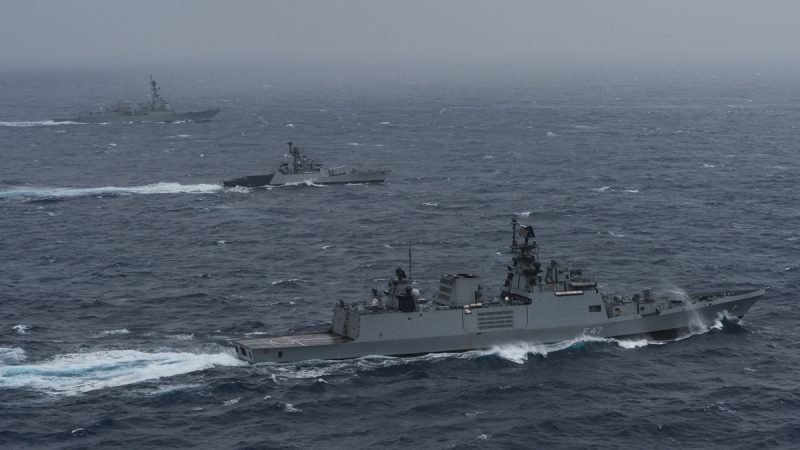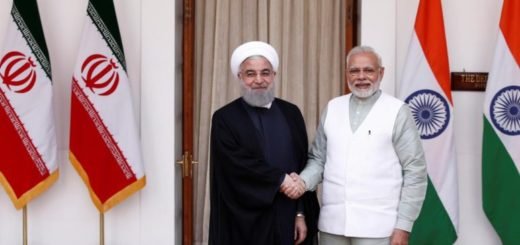Role of ASEAN in the Indo-Pacific Strategy

The third webisode of Indo-Pacific dialogue conducted by Raisina house on the role of ASEAN in the Indo-Pacific strategy on November 3, 2020. The event was hosted by former FOC in C, Western naval command Vice Admiral Girish Luthra, PVSM, AVSM, VSM. (Retd.). The discussion was put forward by Dr Aaron Rabena, research fellow, Asia-Pacific pathway to progress (Philippines), Dr Satoru Nagao, visiting fellow, Hudson Institute and Dr Collin Kon, research fellow, RSIS, National technology university.

South-east Asia, especially ASEAN, is located right to the east of the Indian Ocean and west of the Pacific ocean. It lies to the centre of the vital sea lane of communication that links both the Indian and Pacific ocean, including the South China sea’s disputed territory. Further, the Malacca strait, Which is one of the busiest waterways, bisects ASEAN and connects both the ocean making the region Indo-Pacific region. The region’s economic growth indeed opens up the possibility of cooperation to alleviate poverty and elevate millions of people’s living standards. On the other hand, the rise of material power, i.e., economic and military, require avoiding the deepening mistrust, miscalculation, and behaviour based on a zero-sum game.
With China’s rise and its push for Chinese-based world order, the South East Asian region has turned into a critical battleground to uphold international trade and navigation freedom and openness. ASEAN, in the south East Asian area, is the collection of newly formed underdeveloped countries. Still, it is the fulcrum of Asia’s multi-cultured architecture and a part of rule-based international order. Also, ASEAN is at the centre of Chinese attempts to undermine the US and regional power interests, especially India and Japan, in the region. Various power centres had framed different policies to ease tension, improve trust, and advocate freeness and openness in the area. Japan’s Indo-Pacific Strategy, Australia’s foreign policy white paper, India’s act east policy, Taiwan’s new southbound policy, and the US free and open Indo- Pacific( FOIP) are framed to safeguard the national interest of the respective country. However, an approach without considerable support from the ASEAN nation is not feasible and not applicable either. Historically, the US remains the power to foster the rule-based international system to allow harmless trade and navigation. However, with China’s exponential rise, the South East Asia region is experiencing a geopolitical and geostrategic shift. The ASEAN nations had to find themselves at the centre of the new challenges, and any policy for the area mainly by the USA is seen as a suspension of countering China.
Under pressure from competing interests and in a view to the broker within the strategic environment, ASEAN advocated the ASEAN outlook on Indo-Pacific in 2019. Initiated by Indonesia, the perspective is not based on replacing the existing one but creating a mechanism to enhance the ASEAN community building process and give momentum to ASEAN lead mechanisms such as East Asia summit EAS. Further, it focuses on the dialogue and implementation of Indo-Pacific cooperation. It is based on solving the prevailing situation by dialogue and cooperation instead of rivalry, termed as the ‘ASEAN way.’ Intensifying the US-China trade war and escalating territorial disputes between China and the number of ASEAN countries is the major push factor of the ASEAN outlook on Indo-Pacific. ASEAN chose the safer and the diplomatic route in framing the policy.

The main reason for the reluctance to adopt the intense and aggressive Indo-Pacific approach is the potential possibility of losing China, which is the leading economic partner. The initial burnt of assertive China will be burnt by ASEAN countries only, which are, on many occasions, are on the other side of China’s view. The ASEAN outlook on Indo-Pacific is an opportunity to establish their centrality in the geopolitics of the region. Whereas, the US-sponsored Indo-Pacific strategy is China-centric in character to counter China’s rise.
Advocating the ASEAN outlook on Indo-Pacific, Dr Aaron Rabena claimed that it focuses on ASEAN centrality based on neutrality. It is challenging for ASEAN nations to say no to the incredible power because of its economic interest. If the ‘Quad’ lead order can develop the new economic activity, ASEAN will indeed be inclined toward it, calling it the ‘Economic Carrot.’ He is advocating for ASEAN policy on the term with the Marshall Plan for European countries after the second world war. Dr Sataru Nagao, on the other hand, presented China’s growing threat in the region. He showcases the Chinese military build-up in the south china sea and sees it as a growing threat in the area. He strongly advocated for ASEAN cooperation with the ‘Quad’ nation on Indo-Pacific Policy. However, the views of Dr Collin Kon were quite neutral in its instance. They claimed that ASEAN would not have an Indo-Pacific strategy formulated by ‘Quad’ but will have its concept and will not antagonize China by any means. However, the discussion was summed up to be collaboration among various stakeholders for lasting peace and tranquillity in the Indo-Pacific region.



















